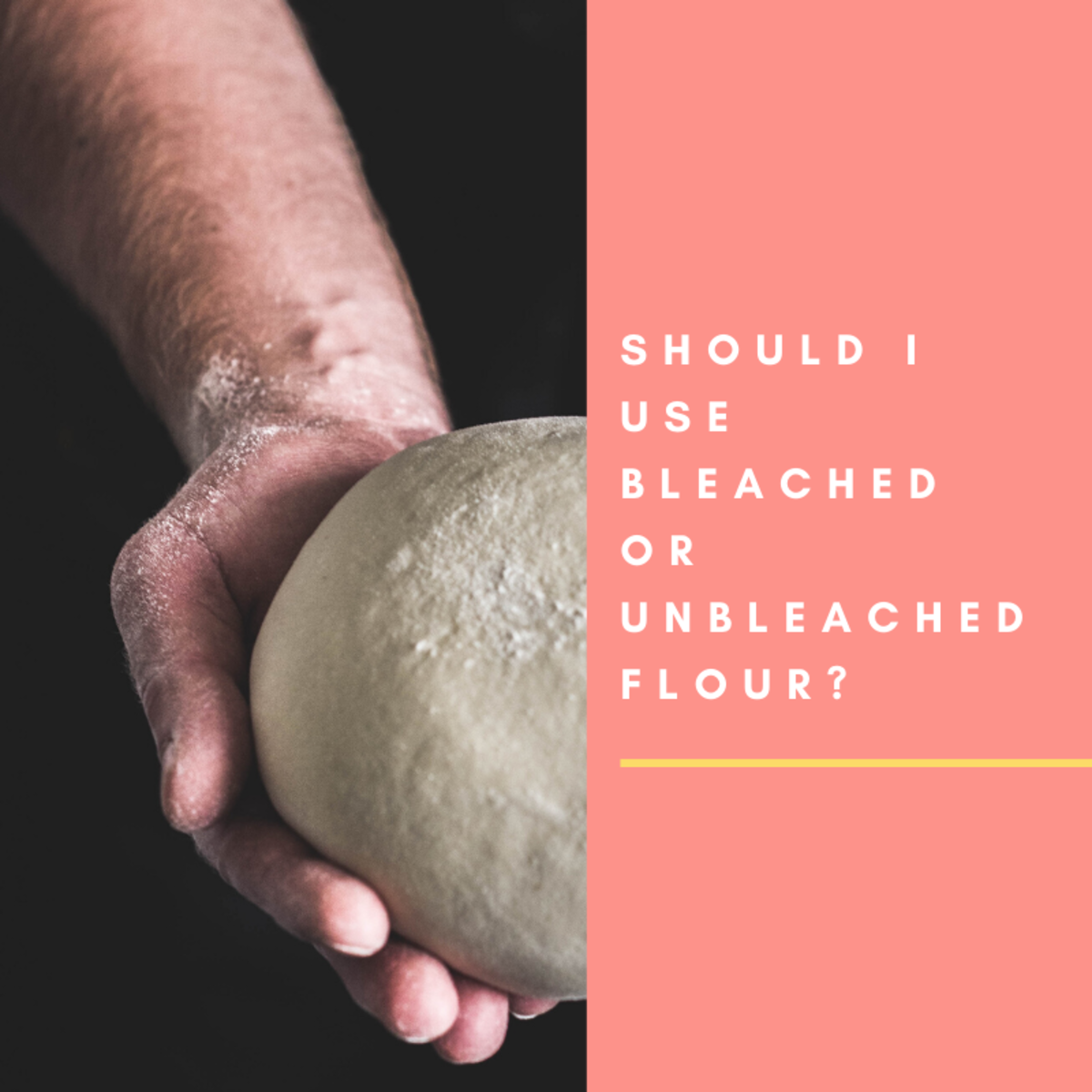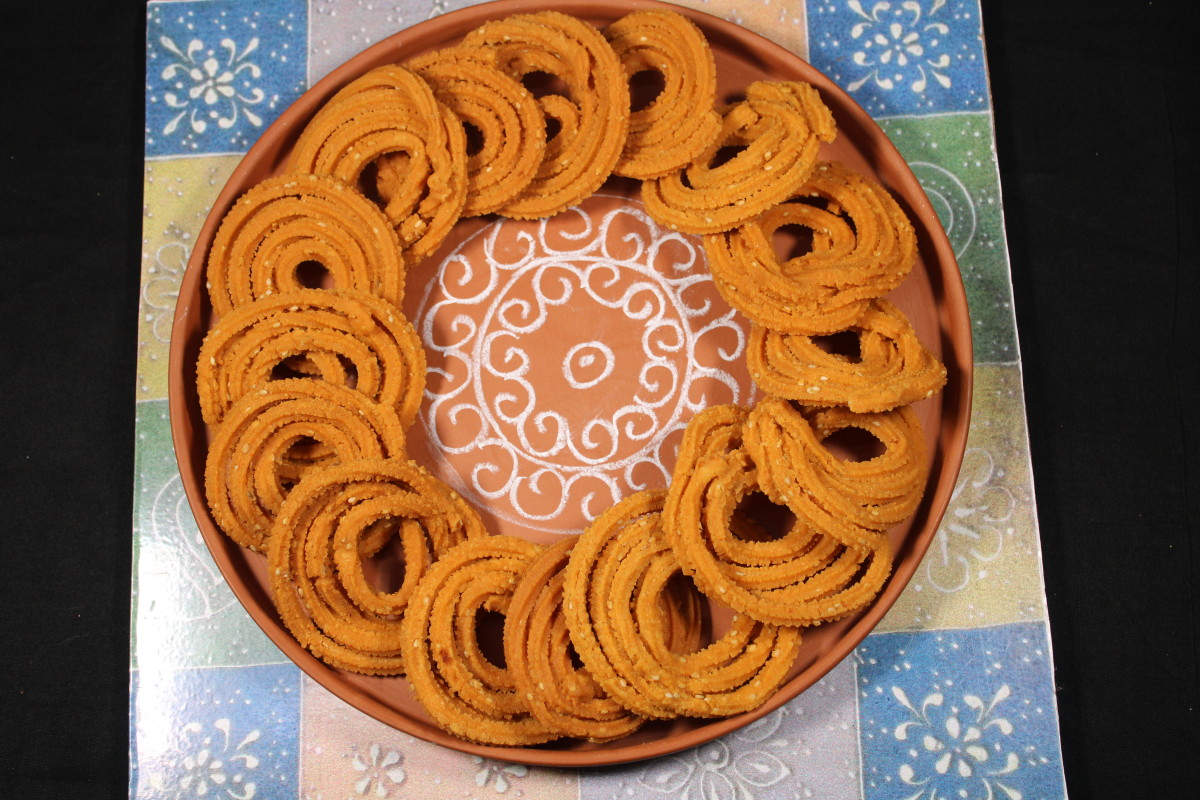How to Measure Flour
Measuring Flour for Baked Goods
The method used to measure flour can be the difference between irresistible baked goods and inedible baked goods.
No matter what you are baking, using too much flour can cause texture problems. Cookies become dry and hard. Cakes become heavy and tough. Breads become dense and dry. Luckily, properly measuring flour to yield the best results is quick and simple.
If you have added too much flour to a recipe, there is a chance it can be salvaged. Tips for salvaging dry dough and batter are included below.
Measuring Cup
Be sure to use the proper type of measuring cup. Flour should be measured using a dry measuring cup. Using a liquid measuring cup will result in an inaccurate flour measurement.
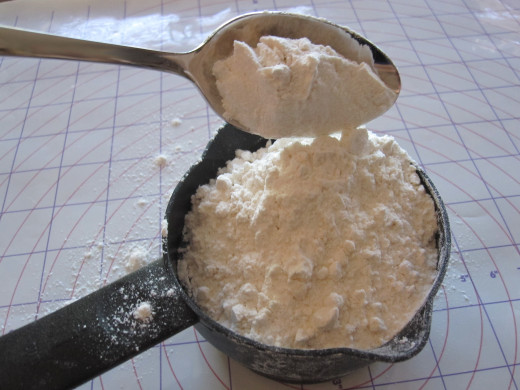
Gently Drop Flour into Cup
Using a spoon or small scoop, gently drop flour into a measuring cup until it is a bit over-full. The excess amount will be removed in the next step.
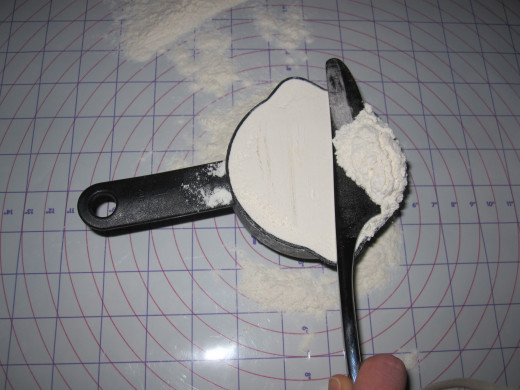
Remove Excess
Using a knife or other utensil with a flat edge, scrape the top of the cup to remove excess flour.
That is all there is to measuring flour the correct way!
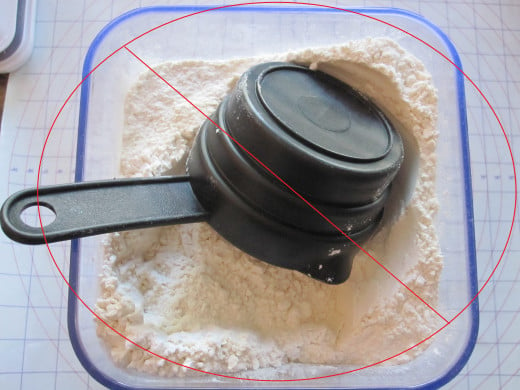
How Not to Measure Flour
Do not scoop the measuring cup into the flour.
Measuring this way will result in using too much flour because the flour will become packed.
Kitchen Scale
If you have a kitchen scale, another option is to weigh the flour. The conversions below are a general guide. Weight may vary slightly by the brand of flour.
All-purpose flour: 1 cup = 4.4 ounces = 124.7 grams
Bread flour: 1 cup = 4.5 ounces = 127.6 grams
Cake flour: 1 cup = 3.9 ounces = 110.6 grams
Whole wheat flour: 1 cup = 4.2 ounces = 119.9 grams
Salvaging Dry Dough and Batter
If you end up with dry dough from adding too much flour, you may wish to attempt to salvage it rather than throwing it out. Before modifying the dough, be sure that it is dry as a result of having added too much flour. Some recipes (such as some butter cookies) will create dry dough by design. Another thing to consider when dough seems dry is if butter was used in the recipe. If butter is not soft, the dough may seem dry (though it is likely just due to hardened butter). The butter will melt during the baking process and the result will likely be satisfactory. If you are familiar with the recipe and certain the dough should not be dry, read on.
Cookie Dough
If cookie dough is the victim of too much flour, mix in additional butter or shortening (depending on what the recipe called for). Alternatively, you may add egg white or water to the dough. Add a little at a time until you achieve the expected consistency.
Making cookies with too much flour will create a cookie with a raw flour flavor. The final product will be dry and crumbly.
Bread Dough
If bread dough is dry, incorporate a small amount of water into the dough by hand until the desired consistency has been achieved. If too much water is added, don’t fret – you can add a bit more flour.
Using too much flour in bread dough may result in bread that is dry and crumbly, has a thick crust, and/or is heavy and dense.
Cake Batter
If you have added too much flour to a cake batter, add additional liquid. If the recipe called for egg, you may add additional egg whites. If water or milk were used in the recipe, add additional water or milk, respectively. If you are unsure of the appropriate consistency, add just enough liquid to create a batter that pours.
Adding too much flour to cake batter will result in a dry and/or tough cake.



